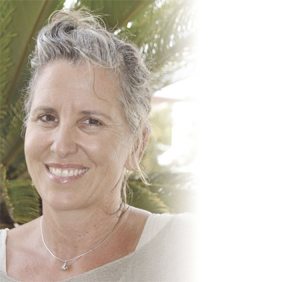You’ve just moved from the Mainland and are drunk with the joy of finally living your dream. “Paradise” you’ll call it the first month, maybe two. Before long you’ll begin to see things you never noticed while jetting from the
You’ve just moved from the Mainland and are drunk with the joy of finally living your dream. “Paradise” you’ll call it the first month, maybe two.
Before long you’ll begin to see things you never noticed while jetting from the Napali to Polihale in your convertible or while combing the groomed resort beaches for shell shards and beach glass. The shine will dull as you take stock of abandoned vehicles arriving regularly around your neighborhood — that is if you don’t live in Princeville. And you’ll notice how appliances appear on the beaches or cane roads around your neighborhood.
Eight years ago we moved into a neighborhood where three doors down in both directions were scores of fighting cocks tethered to stakes in yards — around the corner another 100, maybe more. Directly across from us hunting dogs were penned in chicken cages stacked one on top of the other; some chained with shelter being a square of plywood leaning into a rusted out Honda.
“We’re not in California anymore,” I recited to myself daily.
Rearing its ugly head was my judgment.
Today when people try to tell me how the first year on Kaua‘i is the hardest, I laugh.
First year? You’ve got to be kidding. For me it was the first five.
After five though, something unforgivable happened.
I closed my eyes.
But that all changed two weeks ago. What I thought was me becoming more accepting was me becoming blind.
Two months ago the neighbor who stacks his dogs and has a yard full of caged cocks and hens moved.
Yay, you’d think.
Well, he took the dogs and left the birds.
I waited a few days to see if he’d return for them. Other neighbors told me they’d seen him there feeding, but when I visited the birds were without food and low on water. So I fed and watered them, then called the humane society.
A few weeks passed with my checking them regularly. With every visit I noticed feather loss and many with chapped bald necks. I made another call to the humane society and then, exasperated, let them out of their cages. A few days later the “owner” returned to recage them. When the owner’s daughter showed up, staying in the home that was now in foreclosure, I backed off.
Then I forgot about the birds altogether.
I look into that yard five times a day driving on and off of my property but with blinders over my eyes. Funny how cruelty can happen 50 feet from us daily and once it becomes familiar we no longer see it.
One morning I came home to discover a little black, one-eyed hen in my carport. She had no feathers on her neck and looked like she’d been caught in a jet engine.
Then I remembered.
I walked across our road to discover dozens of dead birds in pens.
This is when I realized that what makes me the daughter of Jim and Caroline Woolway — compassion, courage and community consciousness — had been corrupted for the sake of fitting into a place I don’t belong in the first place. I fooled myself into thinking I was being “accepting.”
Yes, there are cultural differences that require my respect and humility as a new comer to the island, but animal cruelty is not a Kaua‘i value.
Mistakes were made.
The day I discovered the dead birds I met with Dr. Becky Rhoades at the Kaua‘i Humane Society. They had checked on the birds per my request but it was on the day I’d released them so they’d closed the case assuming the owners had returned. Becky and I talked about how to proceed in the future so this never happens again. From now on KHS will follow up with a call to who reported the abuse to be sure the situation is resolved.
As for you and I, Becky couldn’t stress enough the importance of calling again and again.
Most visibly my first mistake was not continuing to report. But on a more personal level, on a more honest level, my mistake was forgetting who I am.
No more turning away. My eyes are open.
• Pam Woolway is the lifestyle writer at The Garden Island. Her column “Being there” appears every other week.


